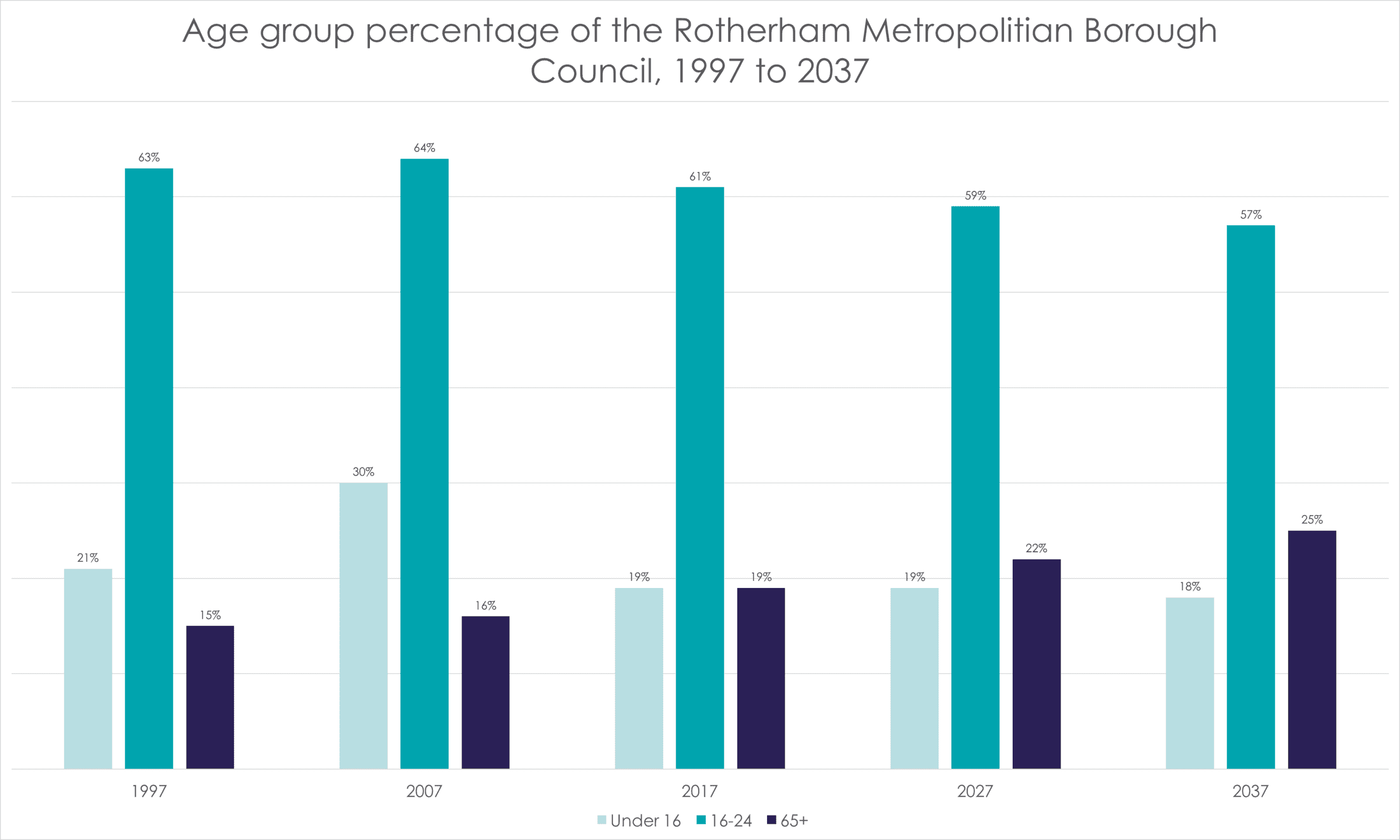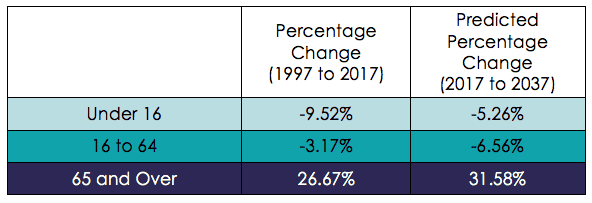With constant advances in technology, medicine and lifestyles, people in the Rotherham area are, on average, living longer than they might have a few decades ago.
As our population ages, the problem of how the older generation are accommodated is starting to emerge. We, as a town, have to consider how we supply decent and appropriate accommodation for Rotherham’s growing older generation’s accommodation needs while still offering a lifestyle that is both modern and desirable.
Read our article to discover the statistics, see what opportunities there might be for local landlords and find out more about the issue of ageing populations.
The statistics
In Rotherham in 1997 around one in every six people (15%) were aged 65 years and over (and the local authority area as a whole), increasing to just under one in every five people (19%) in 2017. It is now projected to reach one in every four people (25%) by 2037. This means that over the next 19 years, the growth of the over 65 population in Rotherham will grow by 31.6% – a lot more than the overall growth population of Rotherham of 4.7% over the same time frame.
In fact, the number of those over 90 is expected to more than double in our local authority from 2,215 (0.8%) in 2017 to 4,591 (1.7%) by 2037.

And looking at the proportional percentage changes over those years:

An undersupply of bungalows and retirement living accommodation
Looking at Rotherham and the local authority as a whole, there is a distinct under supply of bungalows and retirement living (i.e. sheltered) accommodation. The majority of sheltered accommodation fit for retirement is in the ex-local authority sector whilst the majority of private sector bungalows were built in the 1960s/70s/80s and are beginning to show their age. In the medium to longer term, we need to build more bungalows and sheltered accommodation and, if we do that, that won’t only be of benefit to the elderly population of Rotherham – it will have a direct knock-on effect to the younger and middle-aged population by unlocking those family homes the older generation homeowners live in.
There have been 17 Housing Ministers since 1997. No one ever seems to stay in the job long enough to create a consensus and direction in Government Policy on the vital issue of the country’s housing shortage, yet the sound bites and White Papers seem only to focus exclusively on first-time buyers when there is an even more severe and disregarded shortage in suitable housing for the older generation.
Opportunities for landlords
There is an opportunity for investors and buy-to-let landlords in our area (and across the UK, to be honest). If you can buy a tired bungalow and do it up, there is the opportunity to flip it and make some money or rent it out to the numerous OAPs in the area looking for that sized property.
With a bit of thought, this area could be one of the most valuable in years to come. Please do get in touch with us if you need any help or recommendations. Furthermore, keep checking back on our featured property deals where we post some of the best current buy-to-let investment opportunities on the market.
Conclusions
A lot of thought is needed by the government in regards to our ageing population and with the Brexit distractions this is not necessarily forthcoming. Mature homeowners in Rotherham often feel trapped in unsuitably big family properties, unable to find smaller bungalows or suitable and affordable retirement apartments. The waiting list for council run sheltered accommodation is putting a strain on other aspects of social care.
There’s a lot of work to be done. In the meantime, Bricknells Rentals will be here helping ensure that those more mature members of our society looking to rent find the best properties that are suited to their needs.

